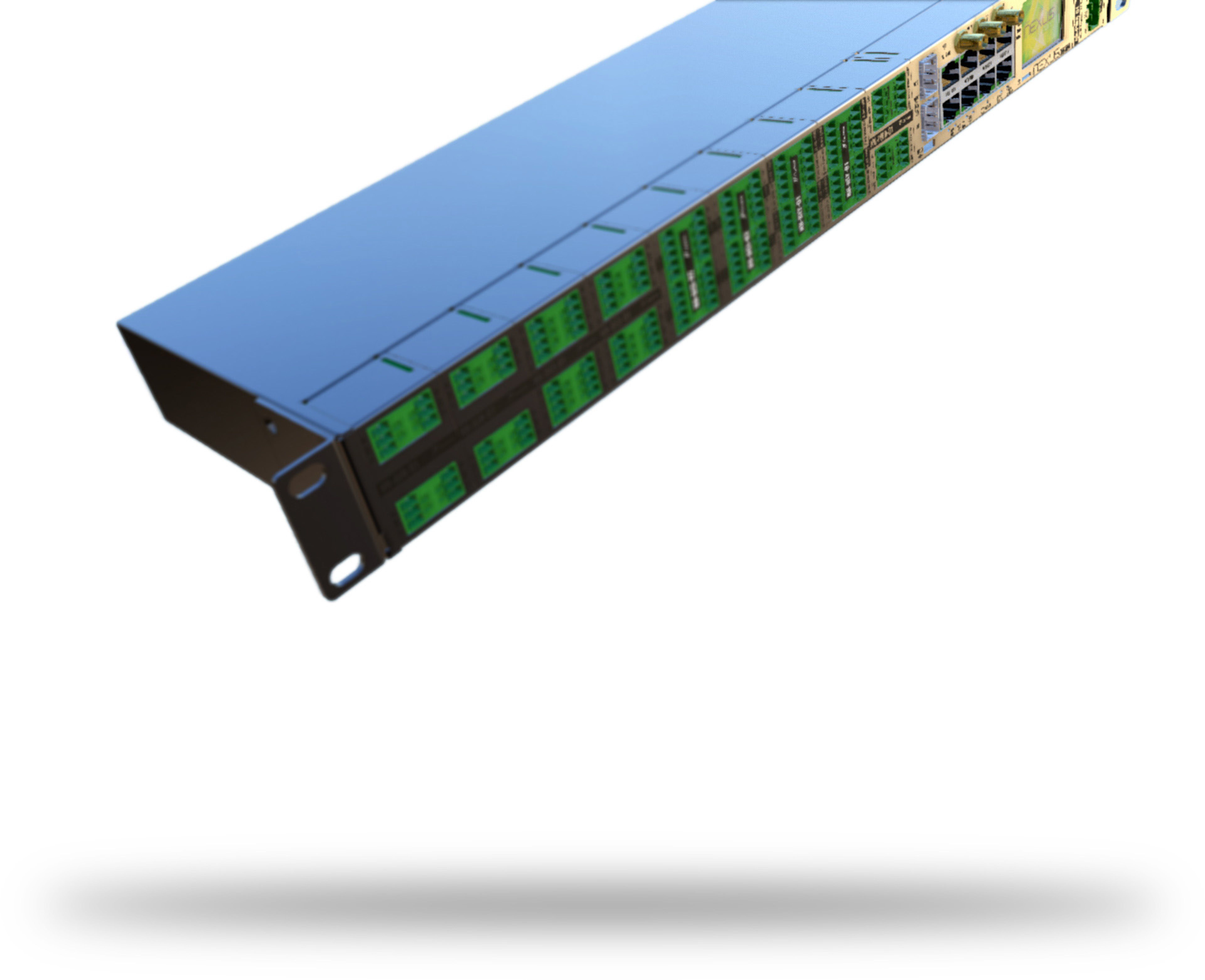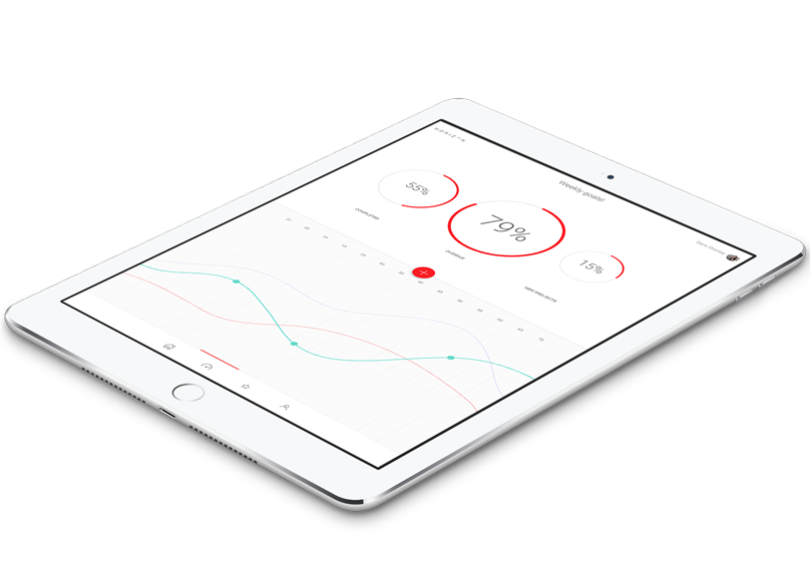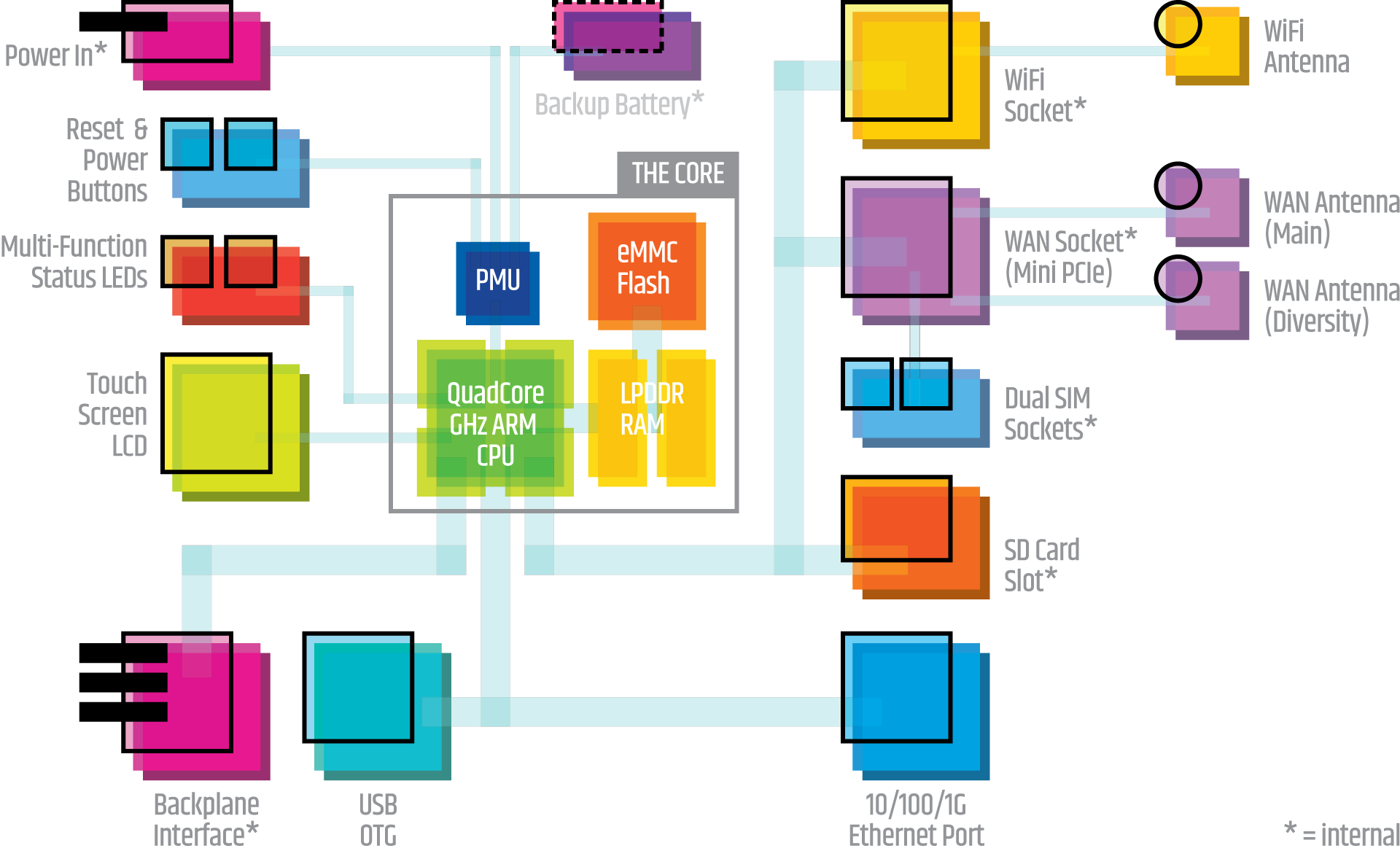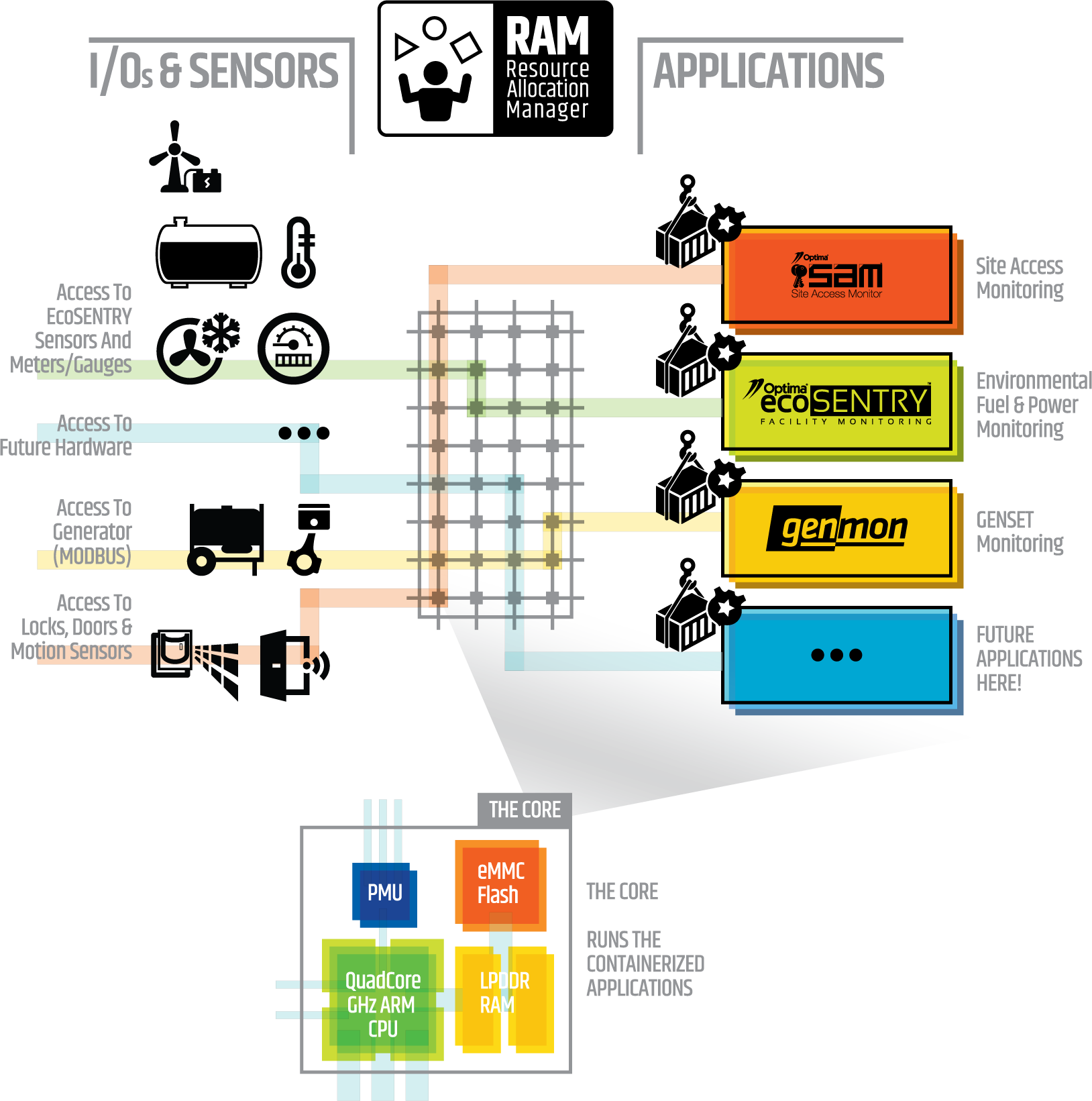TECHNOLOGY & DESIGN
Design Concepts
‘Integrated Networking‘ is our creed. We let it guide us through the development of our most advanced platform ever.
Now, we are proud to introduce the concepts behind the Optima NEXUS Nano.
A new, novel, multi-purpose, multi-function data collection, network management and IoT telemetry gateway.

MODULARITY
We knew our system had to be modular. Only then would it be truly flexible. It needed to address the diverging requirements of our expanding customer base.
So we turned this into a win-win situation. Our customers no longer pay for features they do not need. And we do not run the risk of manufacturing and stocking the wrong model or configuration.
Universal I/O Slots
Custom Configurations
Site Diversity
Need Help?
Can’t find the right solution? Talk to us to find out what innovative I/O modules we have and are coming out next.
RACK MOUNTABLE
Our system had to be 19″ rack-mountable. Most of our customer base utilizes either 19″ or 23″ rack systems. But we did one better. Our new rack-mounts are multi-purpose. They can double as wall-mount, under-desk-mount or shelf-mount brackets as well.
FORM FACTOR
We wrote down one rule: stick to the 1U height. Period. Industrial systems usually come in much larger form factors. Yet these are not ideal for rack-mounting. Thus, we stayed true to the 1U. A form factor of less than 44mm!
At times it drove our engineers crazy. But we persevered, minimizing the space required in already loaded racks. And it means our systems always pack a punch!”
DENSITY
We did not stop there. We were hell bent on shrinking things down even further. The result?
We can now offer an even smaller footprint. Ideal for all those space constrained applications. Places that do not even have any rack space left — or those jam-packed road-side cabinets.
NO MORE CUSTOM CABLES
Custom cables might save time when it comes to wire things up. Alas, they commonly rank as one of the more expensive options. Often, obtaining them and getting them to where they need to go is extremely difficult.
Handling them requires extra logistics, shipping, staging and warehousing. And sometimes they add delays. So we decided to drop custom cabling.
Instead, the NEXUS Nano relies on terminal blocks for everything. This lowers deployment costs. It eliminates the need for specialized tooling. It even allows techs to rig something up in the field — in a snap.
PLUGGABLE CONNECTORS
We all heard it before. Terminal blocks are great, except when things need to change. Imagine having to deal with hundreds of connections that need to be re-done. A daunting task!
That is why we decided to offer pluggable terminal block connections instead. This preserves all the advantages of terminal blocks but with super quick-disconnects. And equally easy swap outs.
FRONT FACING INTERFACES
Early on we decided that interfacing would be from the front. So installers can push the device all the way back against the wall. This reduces the required footprint even further.
Added benefit: it also improves servicing. Front-facing all interfaces saves time, reduces installation costs and makes maintenance simpler.
INDUSTRIAL GRADE ALL THE WAY
We are big fans of IEC 61131-2 Type 3 industrial grade I/Os with diagnostics. Only these offer superior noise immunity and connectivity in harsh environments.
This lets our customers do their sensing — in industrial grade style. And our integrated diagnostics provide peace of mind, keeping things running like clockwork.
FIGHT NOISE
IEC-61131-2 Type 3 defines several operating regions. They consist of the “ON region”, the “OFF region”, and the “TRANSITION region”. The latter separates the first two, to clearly distinguish between the ON and OFF states.
To leave the “OFF region” both a voltage threshold and a current threshold must be exceeded. Similarly, a minimum voltage and current threshold must be satisfied to enter the “ON region”.
Each input has a current limiter. It precisely limits the amount of current drawn from the field input. This avoids thermal problems and makes calculating the power budget deterministic. The region below 0V is for DC inputs only and is a valid part of the “OFF region”.
STRONG & TOUGH
Our Discrete Contact Input modules are designed to withstand surges, electrostatic discharges and fast transients to meet or exceed EMC requirements across the board.
| Surge | Input to RTN | ± 500V |
| Input to Frame Ground | ± 1,000V | |
| Input Group to Group | ± 1,000V | |
| ESD | Discharges | ± 6,000V |
| EFT | Transients | ± 4,000V |
Waveforms according to IEC 61000-4-5 (Surge), IEC 61000-4-2 (ESD), IEC 61000-4-4 (EFT)
ISOLATED INPUTS & OUTPUTS
Being isolated is not always a bad thing. Early on, we committed to offering isolated inputs and outputs wherever possible. We did this to end ground loop issues and improve stability. It also provides safer run-time operations. And when it comes to safety: Being isolated is best!
There was no stopping our engineers. Not only did we isolate the field side from the processing side. Some of our modules even offer individual groups of isolated I/Os.
We knew, from decades of experience, that this would come in handy. There are always complicated installations. We like to be ready for those.
NN-DCI-01
Two DC/DC converters supply two separate, isolated 24VDC feeds. The field side of all contact inputs is isolated from the system side.
Additionally, the first input group (IN1-4) is isolated from the 2nd group (IN5-8).
When using an external power source, leave the +24VDC connections open, wiring up the RTN pins instead.
NN-DCI-02
Two DC/DC converters supply two separate, isolated 24VDC feeds. The field side of all contact inputs is isolated from the system side.
Additionally, the first input group (IN1-8) is isolated from the 2nd group (IN9-16).
BUILT-IN POWER
Everything requires power these days. And having a built-in power source makes deployment so much easier. So we went for that too. The NEXUS Nano provides several isolated 24VDC feeds. With enough power to run external sensors and devices.
We aimed to reduce or end the need for bulky, external power supplies. Integrated power means less headaches, more elegant roll-outs.
UNIVERSAL I/O MODULES
Our goal: Deliver interchangeable I/O modules. This lets the customer order the perfect I/O constellation they need. Every time. And in turn, we can offer custom-tailored solutions. Matched 100% to suit individual site requirements.
Or that of a whole network. A configurator tool* makes the job even easier. Pick and choose the desired I/Os. And at the press of a button, generate all the proper ordering codes.
* = Coming soon.
FULL COLOUR TOUCH SCREEN CONTROL
Lets admit it. We all love our smartphones. And we got used to doing things the easy way. Use a touch-screen to command and control.
This made our choice obvious. And, after a long and arduous effort, we finally accomplished our goal. We squeezed a fast, full colour, touch screen display into a 1U high rack-mountable unit.
Most techs don’t even have to pull out their laptops any more. Walk up to the NEXUS Nano and use the touch-screen controls. The display presents all the states and read-outs in real-time — in glorious colour at 226ppi.
AN ENGINE WITH POWER TO SPARE
With every passing year we seem to be loading our devices with more things to do. These increasing workloads also mean that the embedded CPUs have to work so much harder.
We decided not to skimp. We wanted a reliable workhorse. Maybe two, or even better four. A powerful and fully featured 64-bit, quad-core Gigahertz CPU to cope with today’s demands.
And those we might still dream up in the future. We are certain that we picked the right candidate. One that offers power to spare.
NO MORE MEGA SIZED PACKAGES
We set out to eliminate the hassle. No more installing clunky executables or bloated, proprietary user interface packages.
Instead we wanted our solution to work through a standard web browser. Slim, secure, convenient. And accessible from anywhere.
Not at your desk? No problem. Need to check it from the road? From your smartphone? No problem either. NEXUS Nano offers a secure web management interface. Access anywhere. Anytime.
IRONCLAD SECURITY
Even before we started to design the hardware, we knew. Our system had to offer the best encryption, authentication and security.
So that’s the script we followed. To the letter. We did not cut corners. And we wanted to get this right.
Security is the very foundation of a successful service life for all our devices.
SECURE WEB INTERFACE
Over the years many systems shipped with web interfaces. Yet equally as many suffer from various security or implementation issues.
We took a different approach. We put a lot of effort into designing a system with only the best in secure communications. This allows us to offer the NEXUS Nano with superior authentication, encryption and reliability.

BACKED BY
A TRUE DATABASE
Backed by a solid, secure database, our systems perform better. They manage easier and store configuration settings reliably.
Purpose-built from the ground up, this method is ideal for pushing configurations everywhere. Never fear network wide configuration backups again.
It also lends itself to using custom templates, migrating data or coordinating roll-outs. And it lets you stay one step ahead of your growing network.
BUILT TO
COMMUNICATE
Once we had our mind set on offering the most flexible communication system, there was no stopping us.
We started by bolting an 11-port Gigabit Ethernet switch onto the NEXUS Nano. There are no less than 8 wired 10/100/1000 Ethernet ports as well as two 1Gigabit or 2.5Gigabit SFP ports too.
The USB 2.0 OTG port can be switched to provide CRAFT port access or utilized for more traditional USB tasks.
On the wireless side, we offer on-board Wi-Fi (2.4GHz (IEEE 802.11 B/G/N). For cellular backup we added a Mini PCIe socket and two SIM slots. Now you can reach even the most remote places on earth.

APPS TO THE MAX
Customers loved the idea we introduced with the T:LAN. Applications, running right at the edge of the network. Deployed where it makes the most sense. Collecting and processing sensor data. Right at the source, where the data originates.
Customers loved the idea so much that they started asking to run multiple apps in parallel.
So, when designing the NEXUS Nano, we wanted to serve that need. Now, up to four custom apps can be loaded and run in parallel.
This gives our customers apps to the max.
CONTAINERIZED SECURITY
Running multiple apps in parallel can be risky. So we decided to maximize security and placed each app in its own container.
Isolated, secure, free from cross-dependencies. Eliminating the possibility of apps interfering with each other. By offering a virtualized environment, each app gets the resources and dependencies it needs to run at optimum efficiency.

RESOURCE ALLOCATION MANAGER
Resource allocation becomes important if several apps or the system are all vying for the same I/O, same sensor or system resource. That is why we introduced the Resource Allocation Manager (RAM).
It coordinates who gets to talk to or control contended pieces of hardware. Simply map out which resources the apps or the system are allowed to use–exclusively or in a shared mode. Most inputs can be shared. This eliminates having to double up alarm inputs just to feed apps running in parallel.
RAM also facilitates serial data conduits that proved to useful in the Optima T:LAN. Grant any app access to any serial port, MODBUS port or OneWire device. The system then uses virtual ‘tunnels’ to shuttle the payloads. Creating private data exchanges between the containerized app and the associated hardware.

